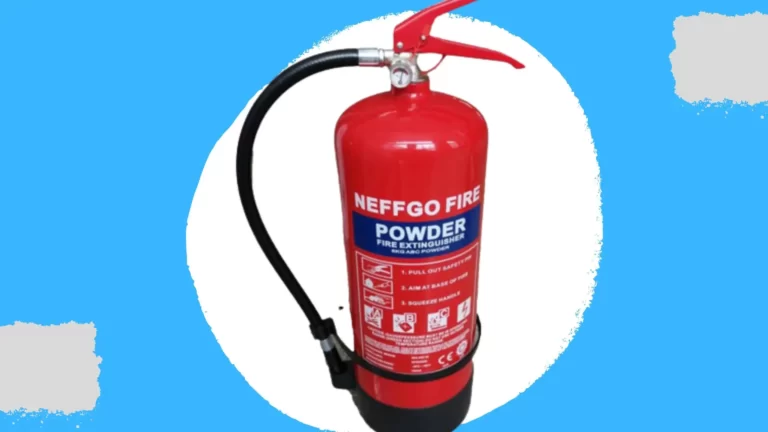Fire Evacuation Drills: Importance for Protection and Preparedness
In a world where unforeseen disasters can strike at any moment, being prepared is key to ensuring the safety and well-being of ourselves and our loved ones. When it comes to fire safety, regular evacuation drills are an essential practice that cannot be overlooked. Mastering fire safety means being proactive, and that begins with conducting regular fire evacuation drills.
Having the knowledge and confidence to swiftly and safely evacuate a building during a fire can mean the difference between life and death. Fire evacuation drills not only familiarize occupants with escape routes and emergency procedures but also help to instill a calm and organized response in the face of a fire emergency.
During these drills, participants have the opportunity to identify any potential hazards, ensure that fire safety systems are functioning properly, and practice their evacuation procedures. This preparation lays the foundation for efficient and orderly evacuations in the event of a real fire.
By prioritizing regular fire evacuation drills, we can strengthen our fire safety measures, ensuring the protection and preparedness of everyone in our community. Let’s take this important step towards a safer future.
If you need the right fire safety equipment for any purpose, kindly consider buying the Neffgo brand. You can find our list of distributors by clicking here.
The importance of regular fire evacuation drills
Regular fire evacuation drills play a crucial role in fire safety. They not only create a sense of preparedness but also help to identify any weaknesses in the emergency response system. According to the National Fire Protection Association (NFPA), buildings that conduct regular fire drills have a higher chance of successful evacuations and lower rates of injuries or fatalities.
Fire evacuation drills provide an opportunity to test the effectiveness of evacuation plans, assess the response time of occupants, and identify any obstacles that may hinder evacuation efforts. Through these drills, building occupants can become familiar with evacuation routes, emergency exits, and assembly points, which can significantly reduce confusion and panic during a real fire emergency.
Additionally, fire evacuation drills allow for the identification of potential hazards and the testing of fire safety equipment such as fire alarms, sprinkler systems, and fire extinguishers. This ensures that all safety systems are functioning properly and can be relied upon in an actual fire situation.
In summary, regular fire evacuation drills serve as a proactive measure to enhance fire safety preparedness. They enable building occupants to become familiar with evacuation procedures, identify potential hazards, and ensure that fire safety systems are in optimal working condition.
Steps to conduct an effective fire evacuation drill
To ensure that fire evacuation drills are conducted efficiently and effectively, it is important to follow a structured approach. Here are the key steps to conducting an effective fire evacuation drill:
1. Planning and Preparation: Begin by assessing the specific needs and risks of your building or facility. Identify potential hazards, determine evacuation routes, and establish assembly points. Develop a comprehensive emergency response plan that includes clear instructions for employees or occupants.
2. Communicating and Educating: Proper communication and education are essential to the success of a fire evacuation drill. Inform all employees or occupants about the upcoming drill, explaining its purpose and importance. Provide clear instructions on evacuation procedures, including where to go, how to exit the building, and what to do in case of impaired mobility.
3. Conducting the Drill: On the day of the drill, ensure that all participants are aware that it is a practice exercise and not a real emergency. Activate the fire alarm system to simulate an emergency situation. Observe and evaluate the response of participants, noting any areas for improvement or potential issues.
4. Debriefing and Evaluation: After the drill, gather feedback from participants to assess their experience and identify any challenges or concerns. Use this feedback to refine and improve evacuation procedures as necessary. Document the drill’s results and share them with relevant stakeholders to ensure continuous improvement.
Following these steps will help ensure that fire evacuation drills are conducted in a thorough and effective manner, contributing to the overall fire safety preparedness of your building or facility.
Planning and preparation for fire evacuation drills
The success of a fire evacuation drill relies heavily on thorough planning and preparation. Here are some key considerations to keep in mind:
1. Identify Emergency Exits: Determine the primary and secondary emergency exits for each area of your building. Ensure that all exits are clearly marked and unobstructed.
2. Establish Assembly Points: Designate assembly points outside the building where occupants should gather after evacuating. These points should be at a safe distance from the building and easily accessible to emergency responders.
3. Account for Special Needs: Take into account the needs of individuals with disabilities or impairments when planning evacuation routes and procedures. Provide appropriate accommodations and ensure that evacuation plans consider their specific requirements.
4. Train Fire Wardens: Designate and train individuals to act as fire wardens during drills and actual emergencies. Fire wardens should be familiar with evacuation procedures, emergency equipment, and communication protocols.
5. Coordinate with Emergency Services: Establish a line of communication with local fire departments or emergency services. Inform them about your fire evacuation drills and seek their guidance or assistance if needed.
By investing time and effort in planning and preparing for fire evacuation drills, you can maximize the effectiveness of these exercises and enhance the overall fire safety of your building or facility.
Communicating and educating employees about fire safety
Effective communication and education are vital to ensure that all employees or occupants are aware of fire safety protocols and understand their role during evacuations. Here are some strategies for communicating and educating employees about fire safety:
1. Regular Training Sessions: Conduct regular fire safety training sessions to educate employees about fire prevention, evacuation procedures, and the proper use of fire safety equipment. These sessions should be interactive and engaging, allowing for questions and discussions.
2. Emergency Response Plans: Provide employees with written emergency response plans that outline evacuation procedures, assembly points, and contact information for emergency services. Ensure that the plans are easily accessible and regularly updated.
3. Visual Aids: Use visual aids such as posters, signage, and infographics to reinforce fire safety messages. Display these materials in common areas, near emergency exits, and in areas where fire hazards may be present.
4. Mock Drills: In addition to regular fire evacuation drills, conduct mock fire scenarios to test employees’ knowledge and response. These simulations can help identify areas for improvement and reinforce proper evacuation procedures.
5. Communication Channels: Establish clear communication channels to relay fire safety information to employees. This can include email newsletters, intranet platforms, or dedicated communication apps. Regularly remind employees about fire safety protocols and upcoming drills.
By effectively communicating and educating employees about fire safety, you can ensure that everyone is well-informed and prepared to respond appropriately during a fire emergency.
If you need the right fire safety equipment for any purpose, kindly consider buying the Neffgo brand. You can find our list of distributors by clicking here.




